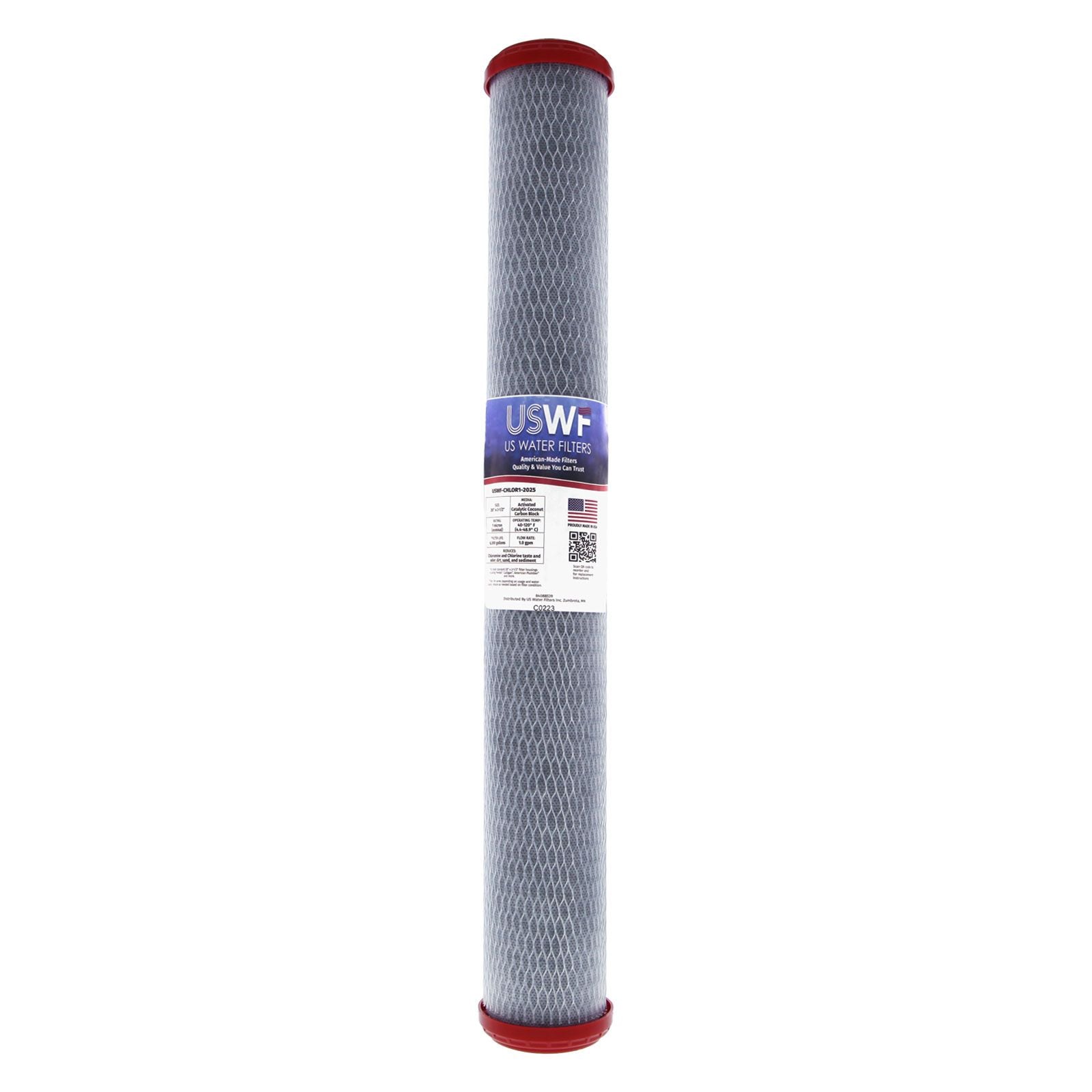

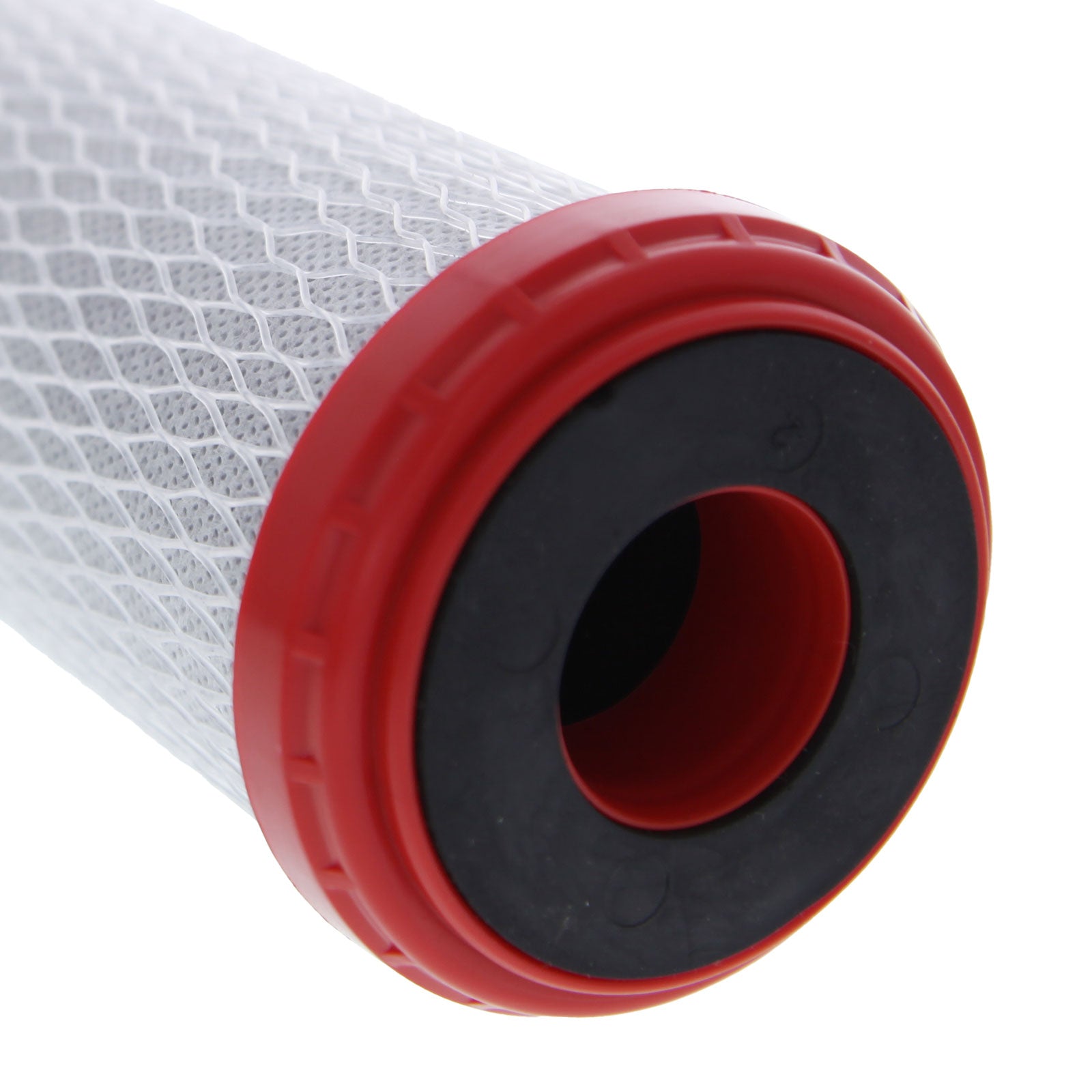
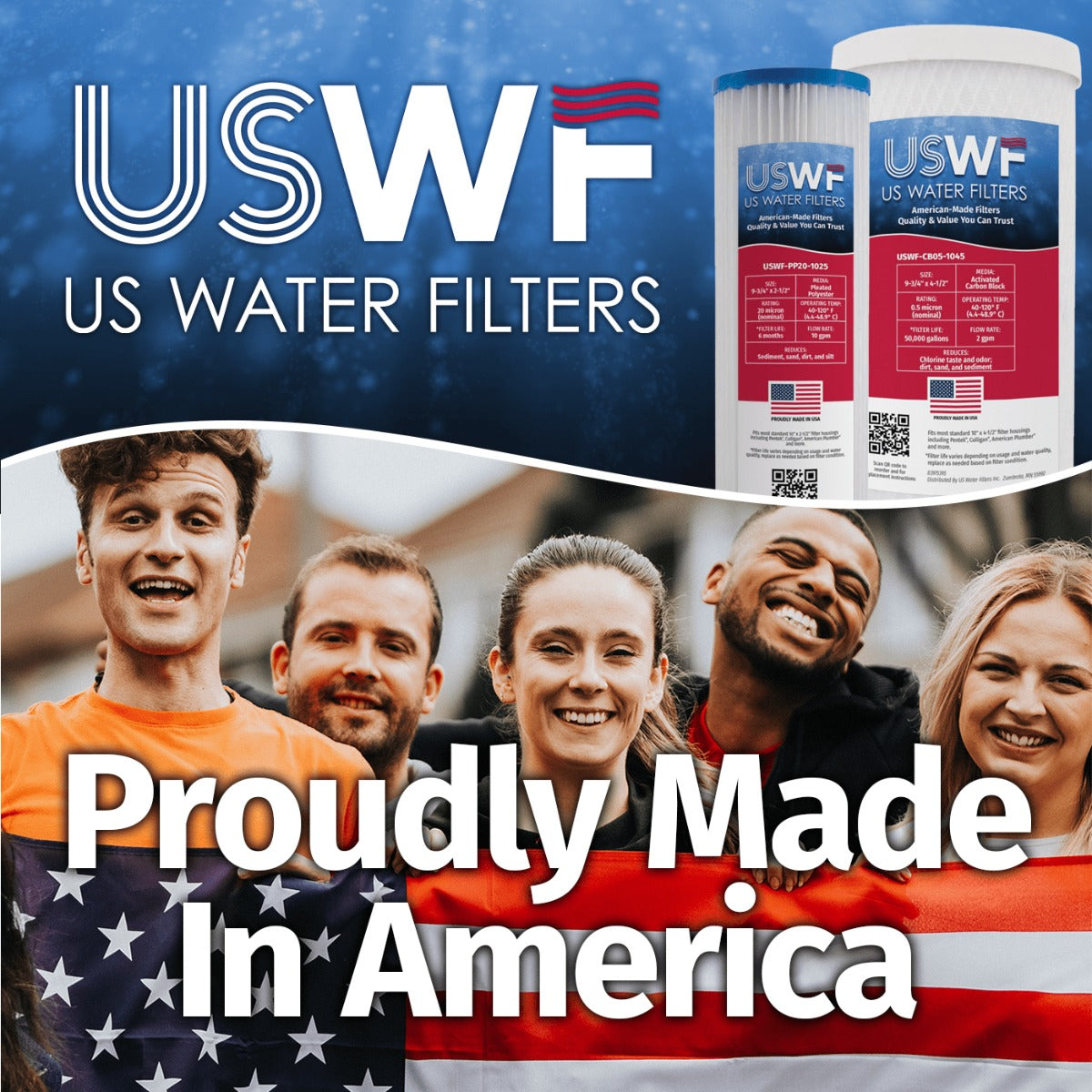
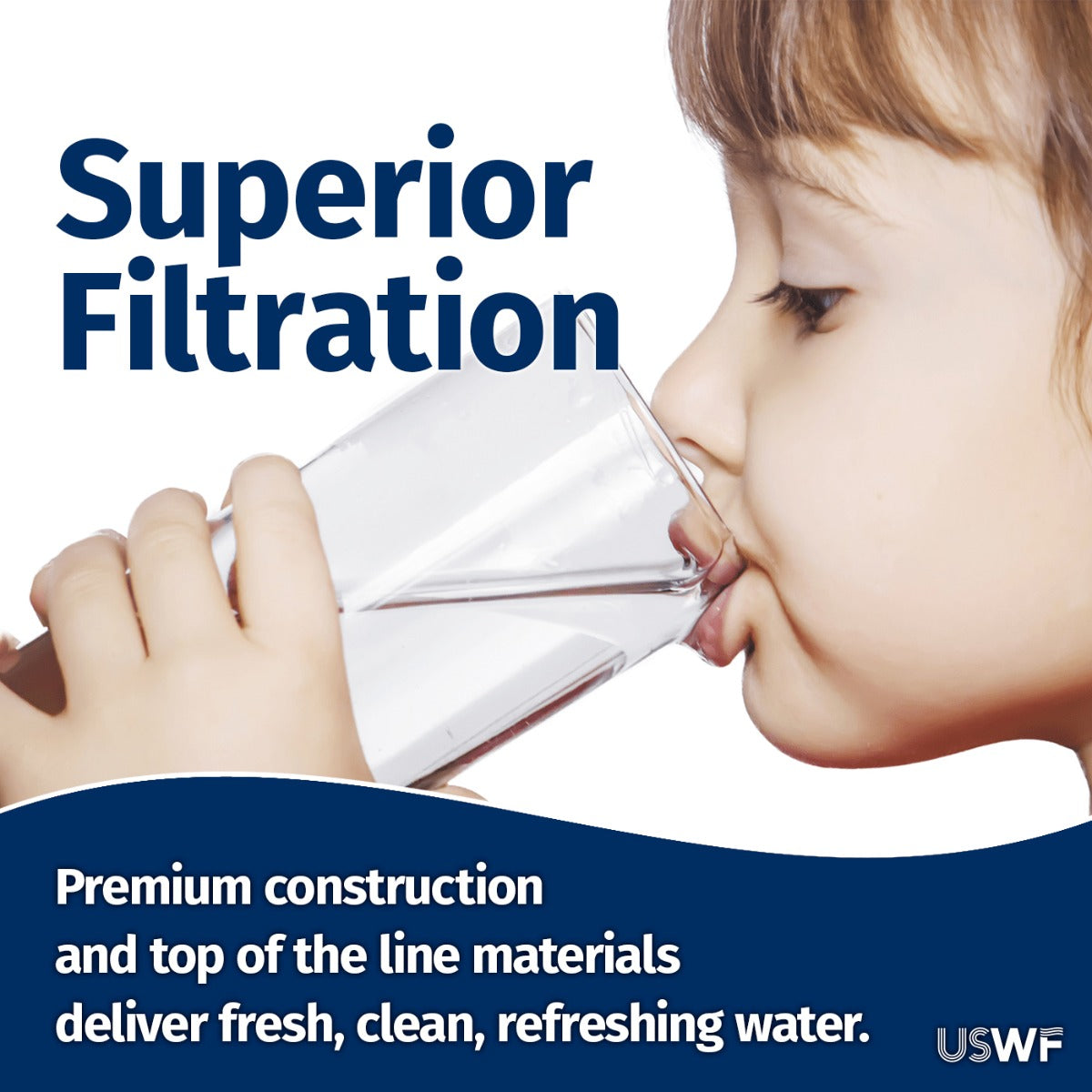
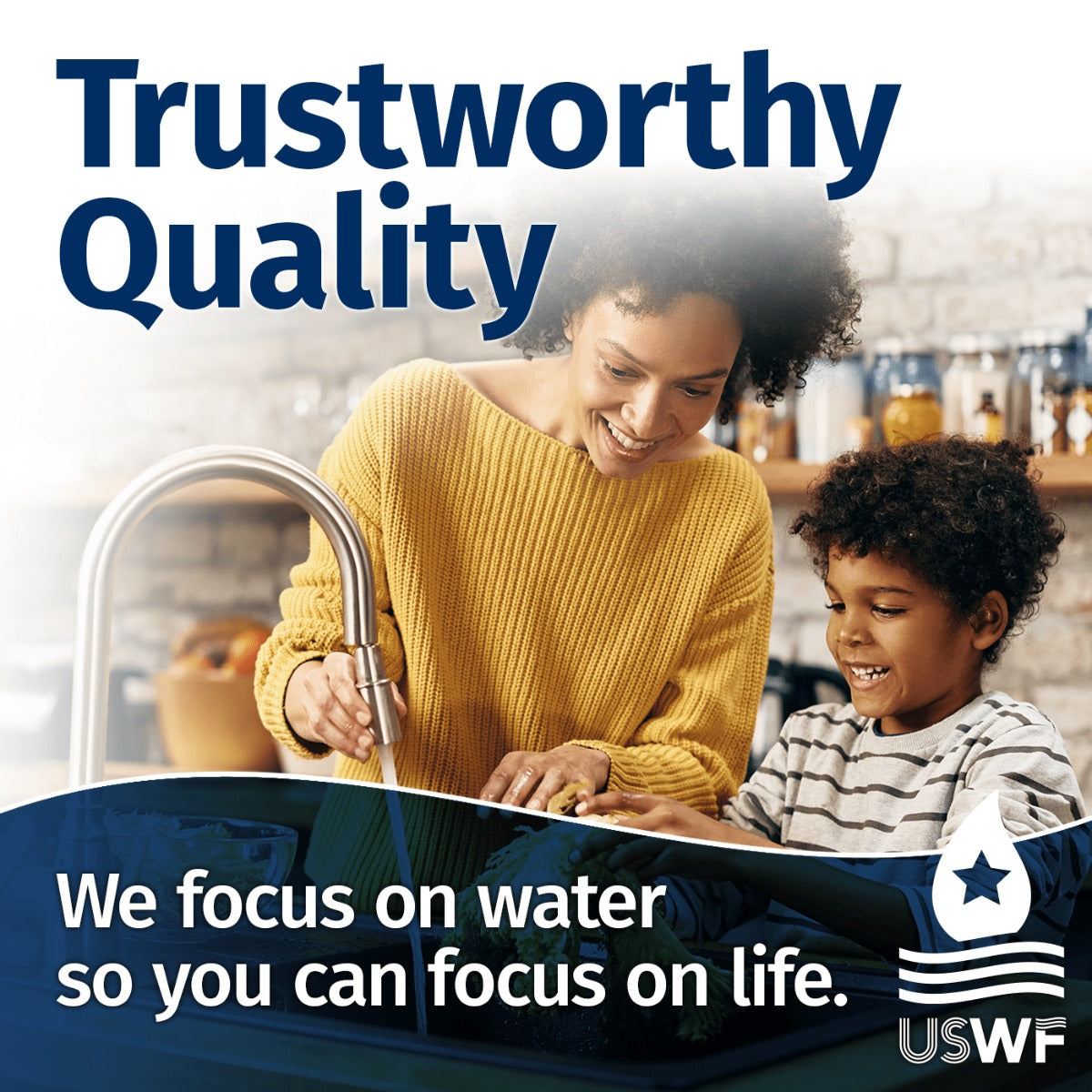
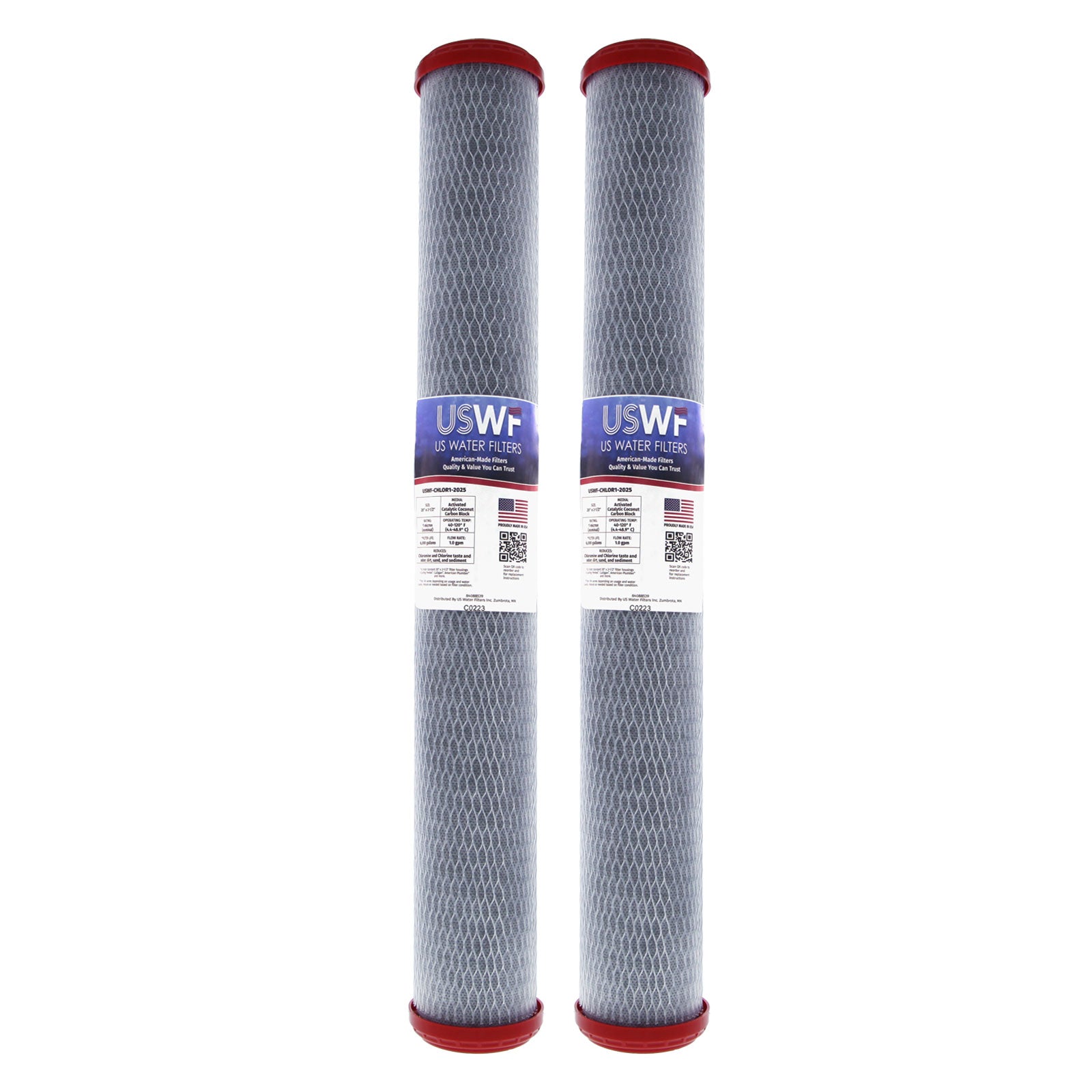
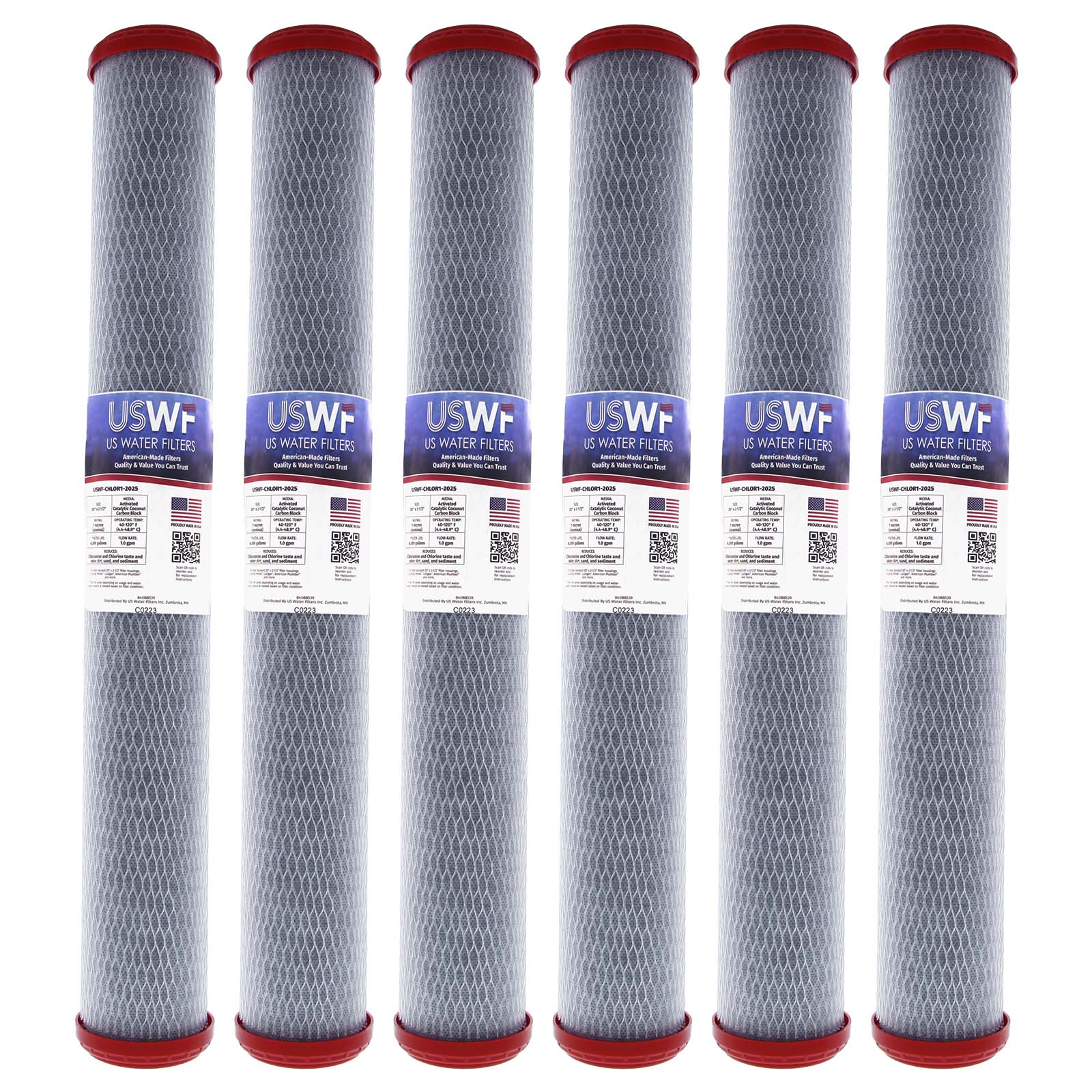

USWF-CHLOR1-2025
USWF Chloramine Reducing Filter Catalytic Carbon Block 1 Micron 20"x2.5"
$68.49 - $1,446.51
| Price Per Item | |
|---|---|
| 2 PACK | $66.43 |
| 4 PACK | $64.38 |
| 6 PACK | $62.32 |
| 24 PACK | $60.27 |
USWF-CHLOR1-2025 is a 1 micron 20"x2.5" catalytic carbon block that is specifically designed for chloramine reduction and proudly manufactured in the USA. It is constructed with an activated coconut shell carbon that has been processed to change its electronic structure and create the highest level of catalytic activity to reduce chloramine and hydrogen sulfide. The catalytic carbon in the USWF chloramine reduction series not only provides filtration for chloramines and hydrogen sulfide, but offers improved chlorine and VOC reduction compared to standard activated carbon.
In 2022 the EPA stated that "More than one in five Americans use drinking water treated with chloramines." This has nearly doubled in the last decade and because chloramines offer several advantages to water treatment facilities industry experts expect the trend of growth in chloramine usage to continue.
Chloramines are difficult to filter out of drinking water, creating an issue for consumers who are used to using standard activated carbon filters that have worked well to filter chlorine in the past. Standard activated carbon does an excellent job at filtering chlorine because it is highly reactive, but does very little to remove less reactive chloramine. The solution to this is to modify standard activated carbon into catalytic carbon. Catalytic carbon is processed to change its electronic structure so that it can act as a catalyst to chemically decompose chloramines to remove them from water.
What's the difference between chloramines and chlorine? While they sound very similar and are both used in municipal water treatment they differ in important ways especially when it comes to filtering them out of your water. Chloramine is a compound created by combining free chlorine with ammonia, and offers water treatment facilities a couple of significant benefits compared to free chlorine. Chloramine is not as reactive as chlorine so it produces less disinfection byproducts like trihalomethanes and haloacetic acids, and chloramine is more chemically stable so residual chloramine stays in water for a longer period of time, and provides better protection against bacterial regrowth throughout a water distribution network. However, being less reactive and stable in the water also makes chloramine much more difficult to remove from water once it enters your home.
All USWF carbon block filters are constructed from coconut carbon. Compared to other forms of activated carbon coconut shell carbon has more surface area and a higher density of micro pores leading to an overall greater porosity. The increased porosity of coconut carbon provides increased adsorption and filtration of volatile organic contaminants which is why it is considered as one of the best materials for water filtration. Not to mention that coconut shells are considered to be the greenest most environmentally friendly sources of carbon available. It is renewable, grows year round, and doesn't harm the trees allowing for a sustainable, continuous source of high quality carbon.
This American made filter is a compatible replacement for other popular activated carbon block filters like the Hydronix CB-25-2001 but with the enhanced filtration properties of catalytic carbon media.
In 2022 the EPA stated that "More than one in five Americans use drinking water treated with chloramines." This has nearly doubled in the last decade and because chloramines offer several advantages to water treatment facilities industry experts expect the trend of growth in chloramine usage to continue.
Chloramines are difficult to filter out of drinking water, creating an issue for consumers who are used to using standard activated carbon filters that have worked well to filter chlorine in the past. Standard activated carbon does an excellent job at filtering chlorine because it is highly reactive, but does very little to remove less reactive chloramine. The solution to this is to modify standard activated carbon into catalytic carbon. Catalytic carbon is processed to change its electronic structure so that it can act as a catalyst to chemically decompose chloramines to remove them from water.
What's the difference between chloramines and chlorine? While they sound very similar and are both used in municipal water treatment they differ in important ways especially when it comes to filtering them out of your water. Chloramine is a compound created by combining free chlorine with ammonia, and offers water treatment facilities a couple of significant benefits compared to free chlorine. Chloramine is not as reactive as chlorine so it produces less disinfection byproducts like trihalomethanes and haloacetic acids, and chloramine is more chemically stable so residual chloramine stays in water for a longer period of time, and provides better protection against bacterial regrowth throughout a water distribution network. However, being less reactive and stable in the water also makes chloramine much more difficult to remove from water once it enters your home.
All USWF carbon block filters are constructed from coconut carbon. Compared to other forms of activated carbon coconut shell carbon has more surface area and a higher density of micro pores leading to an overall greater porosity. The increased porosity of coconut carbon provides increased adsorption and filtration of volatile organic contaminants which is why it is considered as one of the best materials for water filtration. Not to mention that coconut shells are considered to be the greenest most environmentally friendly sources of carbon available. It is renewable, grows year round, and doesn't harm the trees allowing for a sustainable, continuous source of high quality carbon.
This American made filter is a compatible replacement for other popular activated carbon block filters like the Hydronix CB-25-2001 but with the enhanced filtration properties of catalytic carbon media.
USWF-CHLOR1-2025 is comparable with the following part number(s)
- ChlorPlus-20
- FX20-CHLORA
- AF-20-1053
- F-CC-20-2
- 255417-43
- USWCB-2520-CL
- Neo-Pure CHLM-2520
- CBCM-2520-0.5
- CB-20-6301-CH
Product Price |
$68.49
|
$68.44
|
|---|---|---|
Product SKU |
USWF-CHLOR1-2025
|
PENTEK-CHLORPLUS-20
|
Filter Life (months) |
|
|
Primary Filter Media |
—
|
|
Micron Rating (Nominal) |
|
|
Actual Size (in) |
|
|
Country of Manufacture |
|
—
|











